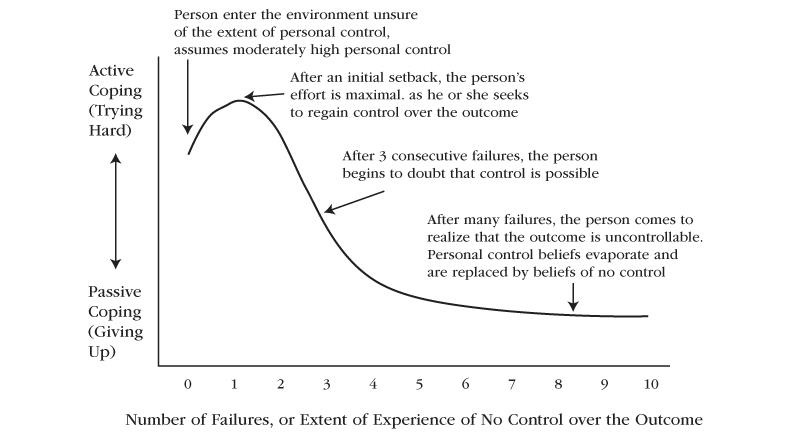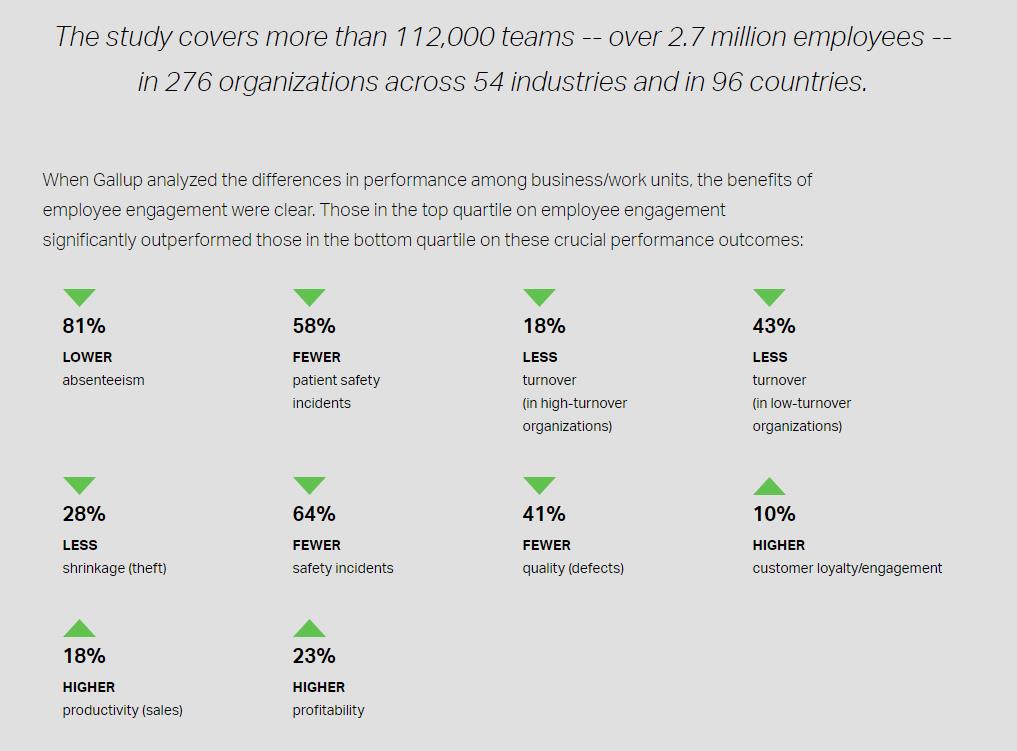The Ultimate Guide to Boosting Team Productivity Through Psychological Safety and Trust

Do you know what the highest-performing teams have in common? They trust each other. They work in a safe environment where no one fears punishment or retribution for making a mistake, taking a risk, or voicing an opinion.
“There’s no team without trust,” says Paul Santagata, Head of Industry at Google. He knows this because of Google’s two-year study into team productivity. They interviewed 200 employees and looked at more than 250 attributes of 180 active Google teams.
They expected to find a perfect mix of talents and attributes. Surely the highest performing teams were a combination of advanced degrees, skilled specialists, and type-A personalities, right?
Actually, no. What they found is that who is on the team does not matter much. What’s important is “how the team members interact, structure their work, and view their contributions.” Ultimately, the study revealed that the best teams have strong trust and psychological safety, including the belief that you will not be punished for mistakes.
What happens when we don’t feel safe at work? According to evolutionary biology, a provocation or threat by an employer (or anyone with power or authority in our work environment), subordinate, or coworker is processed as a life-or-death threat in our brain. The fight-or-flight response is ignited, which shuts down analytical reasoning, thus preventing us from thinking our way out of a problem.
The Need for Psychological Safety and Trust
The need for psychological safety and trust in the workplace is more important than ever. Many of us are working remotely now. Some of us will stay this way forever. But while the COVID-19 pandemic dramatically changed the way we work, the trend started long before. Nevertheless, we are hurtling toward an environment where everyone who can work from home will work from home.
The data shows that psychological safety gives everyone on a team the chance to take risks, speak openly, and try to make an impact without repercussions. These are exactly the kinds of behaviors we should encourage because they tend to lead to breakthroughs. Workers in high-trust companies report 74% less stress, experience 40% less burnout, and exhibit 50% higher productivity.
Unfortunately, even though trust and productivity go hand-in-hand, only 20% of HR and engagement leaders believe their employees deeply trust company leaders. If you want your team and organization to succeed, you must create an environment of psychological safety and trust. These are key to fostering productivity.
The need for psychological safety and trust in the workplace is more important than ever. Share on X12 Tips to Create a Safe and Trusting Work Environment

So how do you increase psychological safety and trust in your team? The following are some actionable tips to create a trusting work environment where team members feel safe enough to take risks, try new things, and speak their mind.
1. Think of conflict as an opportunity, not a burden
It is okay to have some conflict in the workplace. It is okay to disagree with one another, providing it is done in a mature and reasonable way. In fact, a bit of conflict can be a healthy way to come up with new ideas and challenge each other.
Unfortunately, many work environments see any conflict as an adversary. Over time, when a person is repeatedly subjected to aversive stimuli, they develop learned-helplessness. They will stop trying to avoid the stimulus, even when they come across opportunities to avoid it. For instance, if you dismiss someone’s idea in a cruel way, eventually they will accept the cruelty and either a) leave the company, or b) stop offering ideas.

Image: Wikimedia Commons
Encourage the people on your team to explore conflict in a healthy way. Assure them that you will not punish them for articulating their ideas, concerns, and opinions. Avoid accusations and insults. Make sure everyone understands that the goal is not to be the winner, but to achieve the best outcome.
2. Avoid blame at all costs
Blame does not belong in the workplace because it does not accomplish anything. It only creates divisions between people and makes people resent one another. People who feel blamed ultimately disengage from their job. Blame focuses on the problem, when really you should be focused on the solution.
Does this mean you can not hold people accountable? Absolutely not. The solution is to replace blame with curiosity and forward-thinking. Instead of harping on the problem, have a conversation that addresses the issue from a desire to learn.
For instance, let us say a team member is having a hard time meeting deadlines. Instead of berating them for being lazy or avoiding work, state the problem as an observation using neutral language. “Over the past three months, there have been several missed deadlines. Two projects are currently late.”
Then, engage in some exploration without accusations. “I see you at your desk every day, so I know you’re working. There must be several factors at play. Let’s uncover them together.”
Finally, ask for solutions. The people who are responsible for our problem are usually the best ones to solve it. So before you start giving orders and micromanaging your team members, make sure to get their input. Let them own the problem, empower them to solve it, and ask how you can support them.
3. Focus on results, not the clock
Ask yourself this: What’s more important? Clocking in and out, or the results of your team’s work? Of course the results are more important. That is how you achieve your team’s goals. But if you focus too much on time, two things will happen:
- Your team will trust you less because it is clear your priorities are in the wrong place.
- Your team will focus on meeting your time goals instead of your performance goals.
Instead of worrying about the minutes and seconds your team spends working, study results. Do they produce quality work products? Are they meeting your goals? Are they regularly making improvements to their personal performance?
Interestingly, time tracking is useful, but not as a disciplinary tool. It can provide insights that help you understand where the team is spending their time and whether they are getting the most value from their work. For instance, if you notice that a team member is spending far more time on certain projects than they should, you can step in and offer coaching to help them improve.
You just have to review a report like this to learn how a team member is spending his or her time.
![]()
Be careful about affecting your team’s privacy and autonomy with too much oversight. If your team feels like your time-tracking activities are intrusive or used to control them (even when it is not meant to), they might resent it.
This is why Timing is transparent about what gets shared with managers. The app focuses on providing managers with only the information that is needed to understand their key metrics (such as total time spent on a given project) and strongly restricts the ways it can be used for “big brother” employee monitoring. Private projects are kept private and are never visible to managers. Only the total time spent on team projects can be seen by managers. Timing strongly believes that everyone should be in control of their own private information. Learn more about what gets shared.
4. Genuinely listen to your team’s ideas
As a leader, it’s tempting to do all of the talking. After all, you were selected for your leadership. But part of being a good leader is listening to your team’s ideas and considering them honestly. This is also key to making them feel safe in their work environment. If they know their ideas matter, they will be far more likely to offer them.
That said, listening to your team does not mean waiting silently for them to offer their thoughts and opinions, especially in the beginning. You have to be active about it by asking probing questions and encouraging them to elaborate. It is smart to set aside time each week to discuss your team’s work experiences and if they are facing any challenges or if they have any new ideas that they would like to share.
Furthermore, body language is an important part of active listening. When your team members speak to you, turn your body to face them and make lots of eye contact. It also helps to nod slightly as they speak to show that you are understanding.
Most importantly, listen carefully to the positive and negative feedback. Judge them equally, without blame, accusations, or defensiveness. You have to demonstrate that you are open to their feelings even when you do not like what they say.
5. Encourage coaching before there are problems
In some organizations, employees learn through admonishment and discipline. They work without oversight on tasks and projects. When they fail or perform poorly, they are criticized and disciplined. This manner of teaching creates an environment without psychological safety and trust. It also squashes productivity.
Most millennials look to their managers as their primary source of training and development, but only 46% believe they fill this role. Instead of punishing, use positive coaching to build trust and keep work flowing. Research shows that authentic leadership can boost trust, engagement, and – the best part – performance. If you guide your team to success, you will enjoy a range of benefits, including a 22% increase in profitability and better work relationships among 77% of your organization.
6. Avoid micromanaging your team
As a leader, it is tempting to manage your team closely. If you stay on top of their work, they will not be able to make mistakes, right? Sadly, this is not the case. Micromanaging is more damaging to your team’s productivity than giving them freedom and allowing them to make mistakes.
Furthermore, micromanaging makes your team feel untrusted. Your lack of trust makes them worry about making mistakes, so they avoid taking risks, trying new ideas, or taking action without your approval. This erodes their productivity because they have to wait for your feedback before doing anything meaningful.
Besides, no one enjoys being micromanaged. It makes your team feel unvalued. They become unengaged from their work, which also reduces productivity.

Image: Gallup
Does this mean you should let your team do whatever they want? No, absolutely not. You can still maintain a level of control without managing every detail of their work. For instance, tracking your team’s time and reviewing their reports weekly will give you an idea of how they can improve. Then you can offer coaching without standing over their shoulders all week.
7. Protect your employees
If you manage a team that’s part of a larger organization, it is your job to protect them in the workplace from harassment, blame, drama, hazing, and other forms of abuse. If your team does not receive protection from you, they will feel unsafe and not trust anything you say or do.
They must also be kept safe from burnout. As a leader, it’s your job to ensure everyone maintains a reasonable work/life balance. A healthy balance can actually improve productivity. Time tracking tools that help you understand your team’s labor contributions helps you identify potential exhaustion and burnout before it happens.
Protecting your team means that you can never be the source of any kind of abuse. If you talk about them behind their back, manipulate them into doing something unethical, or force them to take the blame for your mistakes, or push them to work longer than they should, the work environment will suffer. Your team will spend more time playing games and avoiding conflict than actually working, which will harm productivity.
8. Create an inclusive culture
Your culture is a collection of traits that define your company. Strong and healthy cultures lead to positive performance and the achievement of your goals. Weak and dysfunctional cultures lead to poor performance, high turnover, and a poor reputation for your company.
An inclusive culture is one that encourages everyone to participate. It values the individual strengths of your team members. It finds ways to use people according to their strengths, rather than forcing people to fit roles they are not suited for. In these kinds of environments, people feel safe and secure because they know they are welcome and their skills are making a positive impact on the overall company/team success.
According to Gartner, inclusive and diverse teams can see performance improvements of up to 30%. You can make your culture inclusive by focusing on workplace accessibility, equal pay and benefits, diversity training, and creating a work environment that welcomes everyone.
Most importantly, it is key that everyone buys-into your culture. This means hiring people that understand and want to work according to your values. You can not force someone to align with your values, so it is critical that you get your hiring right.
9. Break down the barriers of remote work
Remote work appears to be the future, but it comes with its own challenges, especially for teams who work asynchronously. It is difficult to create environments of psychological trust and safety when no one meets face to face.
As the leader, it is your job to create bonds between your team by compensating for the deficiencies of remote work. These simple strategies will help:
- Create plenty of face time with video meetings.
- Encourage lots of non-work discussion in your Slack/Teams workspace.
- Organize opportunities to meet in person where possible.
- Use video and audio recordings in lieu of text.
Over time, as your team begins to know each other as people, and not just avatars and profiles, they will trust one another enough to speak up, offer feedback, and take risks. They will also be less likely to dismiss one another and criticize harshly.
10. Respond to problems constructively
If your first response is to get angry or upset when your team comes to you with a problem or challenge, you probably do not have an environment that’s psychologically safe. Leaders who respond to problems with abuse end up with workers who simply do not come to them with their problems. Problems go unnoticed until they become too big to ignore (and often create deeper issues, including lost money).
For instance, let’s say an employee comes to you with a problem with one of their accounts. They are not sure how to accommodate the client’s latest request. If your instinct is to tell the employee to “figure it out” or admonish them for not knowing what to do, that employee will stop coming to you with their challenges. In the future, they will take the risk of handling it on their own without your support.
When your employees come to you with their problems, it is important to behave constructively. Ask them to elaborate in order to get all of the details. Ask lots of questions so that you understand their challenge completely. Then, without getting defensive, ask what you can do to help. In many cases, it only takes a quick word to put your team member in the right direction. This will create an environment of psychological safety and keep them working productively.
11. Share as much information as possible
Be open with your team about the state of your company, your goals, and how well everyone is doing. By giving them more information, you show them that you trust them as members of your organization. You also give them the tools they need to perform their jobs well and it gives them an opportunity to notify you about problems, upcoming challenges, or potential improvements.
Show them your research on clients and competitors. Make your company roadmap public. Give them access to documentation and standard operating procedures, even if they do not apply directly to their job. Explain to them exactly how you measure their performance. Yes, this might drift into the territory of overcommunication, but it is better to have too much information than too little.
Whenever you communicate with your employees, it is absolutely critical that you remain honest and transparent. Do not just tell them what they want to hear (although that is often easiest). Be sensitive, but hold nothing back. A single lie – no matter how innocent – can ruin years of trust, so make it a policy to be honest at all times.
12. Measure psychological safety regularly
Your final step is to take inventory of your team’s feelings regarding trust and psychological safety. This is something to do on a regular basis, at least every quarter. Send a short, anonymous survey to your team. What you ask will depend on the nature of your environment and your team, but the purpose is to:
- Learn whether your management style has created a safe environment
- Learn whether the safety of the environment has led to an increase in engagement, job satisfaction, and productivity.
- Identify any factors that threaten the psychological safety and trust of the workplace.
- Make sure no one feels that they will receive retaliation or criticism if they admit an error, make a mistake, or propose a bad idea.
If you are not satisfied with the results of your survey, revisit these steps to bolster the safety and trusting nature of your work environment. If someone admits to feeling unsafe, they have probably felt that way for a while.
Wrap Up
The logic is simple: If your team works in an environment that is psychologically safe and trusting, their productivity will improve, results will improve, the team and business will succeed, thereby motivating the team further. The tips we outlined above will help you facilitate this kind of environment.
